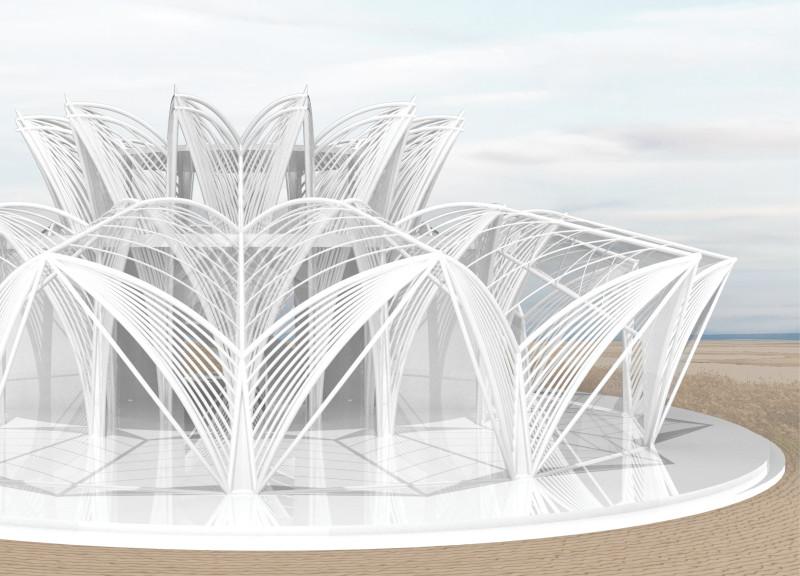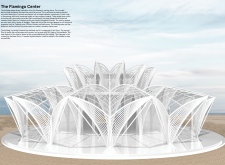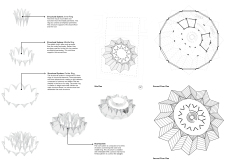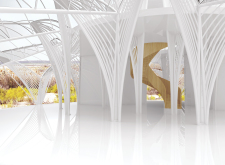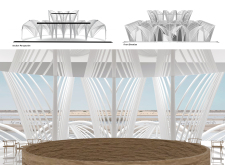5 key facts about this project
The Flamingo Center is an architectural design located near wetlands, focusing on the concept of movement inspired by the mating dance of the flamingo. Functioning as a space for training, offices, and public gatherings, the design incorporates natural elements into a structured form. Three concentric rings of differing heights and widths create a visual flow, connecting the building with its environment.
Structural Configuration
The building features a layered arrangement of three concentric rings. The inner ring is the tallest and narrowest, while the middle ring provides structural support and stability. The outer ring is wider, forming a solid base for the entire structure. This configuration allows for an engaging architectural profile while ensuring functionality.
Interior Layout
Inside the Flamingo Center, the design emphasizes openness, encouraging interaction among occupants. Skylights are included throughout the space, allowing natural light to wash over the interiors. Although there are a few enclosed areas, such as training rooms, kitchen facilities, and restrooms, these spaces do not take away from the overall sense of connectedness. The layout promotes versatility and collaboration among users.
Circulation and Features
A central curved staircase acts as a key feature within the building. It facilitates movement between the two floors and creates a focal point in the design. There is also the option for a glass elevator, which enhances accessibility for everyone who visits. This thoughtful approach to circulation supports ease of use in the space.
Environmental Interaction
The design carefully considers its surroundings by facing the wetlands. A coffee space on the second floor connects to a terrace that offers expansive views of the landscape. This increases the interaction between the building's interior and the natural world outside. The roof utilizes inflatable ETFE cushions that help in managing daylight and improve the energy efficiency of the structure. This attention to environmental factors creates a more comfortable atmosphere for all users.


